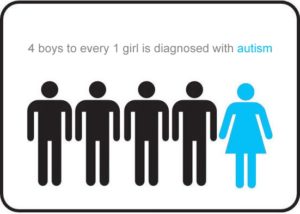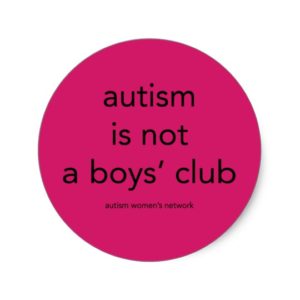Though autism can affect anyone regardless of sex or gender, an individual’s gender will affect their disorder and how others view it. Sexism against women and ableism (discrimination against the disabled by the non-disabled) are social forces that interact with each other – they are intersectional.
Women with autism spectrum disorder (ASD) face challenges that differ from their male counterparts. These differences begin with diagnosis: boys are 4.5 times more likely to be diagnosed than girls. Girls on the high-functioning end of the spectrum are less likely to self-isolate than boys, making their social differences less obvious – a key component in diagnosing children. Researchers have termed this “social camouflaging,” referring to the generally better behavior and greater effort to fit in that autistic girls display.

However, this gender gap cannot be attributed to biology alone. This discrepancy also reflects the lack of understanding that the scientific community has of autism, particularly autism among girls; most autism research (and general medical research) only studies males.
If and when a diagnosis is made (often later than boys), autistic women must deal with sexism in the medical community. Regardless of disability or condition, women statistically receive less attention and time from medical professionals than men do. More specific to neurodiversity, psychotherapists and psychiatrists are not impartial to the gender of their patients. This often unconscious bias affects the course of treatment with potentially severe consequences. For example, the overdiagnosis and over-medicating of women for psychiatric conditions can hinder a correct diagnosis of autism. An intelligent autistic girl who struggles socially due to her disorder may be misdiagnosed multiple times: bipolar, borderline personality, paranoid personality, obsessive-compulsive. In this scenario, a girl may receive a host of pharmaceuticals and basic psychotherapy, but not the treatment that a properly diagnosed autistic boy would receive.
In recent years, attention has been brought to the gender disparity in diagnosis and treatment of women with ASD. More funding is available for research on female participants, and charities specifically geared towards autistic women and girls are gaining recognition (example: Autism Women’s Network). Even feminism, which has conventionally ignored the needs of disabled women, is beginning to recognize the intersectionality of sexism and ableism.

Speak Your Mind